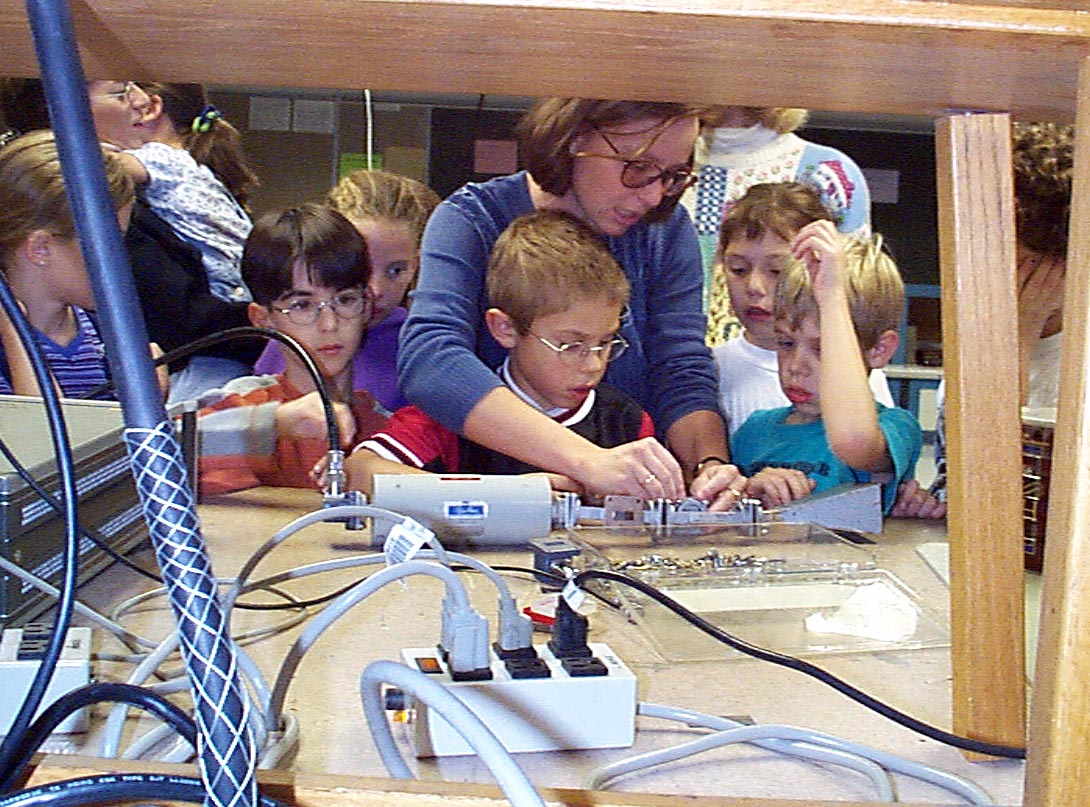Courses
ECEE 1500: Sustainable energy (non-engineering majors)
The class will be taught for the first time (with Prof. Tim Brown) in Spring 2010 and was approved as the Arts and Sciences QRMS (quantitative reasoning math and science) elective. The course was taught by Prof. Popovic alone for the second time in Fall 2010, and this course material is currently being used at the University of Washington (Prof. Peyman Arabashahi) and Ohio State University (Prof. Betty Lise Anderson). The course includes experimental group projects focused on energy issues related to engineering.
ECEE 2010: Electrical Engineering in Biology and Medicine
Sophomore elective seminar course.
ECEE 2420: Electronics for Wireless Communications
Sophomore elective for electrical and computer engineering majors. Taught for the first time in Spring 2011, 40 students (maximum). The course has a laboratory component and follows the textbook “The Electronics of Radio” by Prof. David Rutledge. The goal of the course is to motivate later courses in circuits, electromagnetic and communications, while teaching some basic practical and lab skills. The students spend the semester learning about analog electronics through the building of a pcb-based 7-MHz radio. As their final exam, they take the Technician and General Amateur Radio test and get their licenses.
ECEN 3400: Electromagnetic Fields and Waves I
1st semester junior, 5 credit (lectures, labs, recitations) core course. Annual enrolment about 120. Textbook (about 450 pages) and workbook (about 200 pages) written by Prof. Popović for the course published by Prentice Hall in 2000 and is distributed free to students. Series of 12 labs. Partnership with the Motorola Cellular Infrastructure Division, Fort Worth, for internships, class project competitions and lab maintenance funded by Motorola. Recently obtained funding ($12,000) for the lab from Spectralink, Inc.
ECEN 3410: Electromagnetic Fields and Waves II
2nd semester junior course. Theoretical background and a set of practical problems and laboratory exercises that cover EM wave topics in the radio and optical parts of the spectrum, as pre-requisite for the microwave lab. Covers reflected and transmitted plane waves in layered media, Poynting's theorem of electromagnetic power, two-conductor transmission line theory and practice, Smith chart usage and impedance matching, and elements of antenna theory.
ECEN 4363/5634, Microwave Lab
Senior/beginning graduate level lab, annual enrolment about 40. Developed most of the labs, wrote the lab manual and notes, obtained equipment donations from HP/Agilent over the years (about $500k). Lab emphasis on communications. A design final project is part of the course, ending with a mini-conference with paper presentations. A digest of the conference is available on request.
ECEN 5104, CAD of Microstrip Circuits
Typical enrolment is 15-20 graduate students who completed 6 design projects using commercial CAD tools (Agilent ADS, Ansoft Advanced Designer, AWR Microwave Office): matching circuits, couplers, filters, resonators, bias networks and a final larger project in an area of the student’s choice.
ECEN 5014, Active Microwave Circuits
Graduate class with strong design component, taught every other year, enrolment about 25/semester. Class includes six two-week design projects using industry-standard software, circuits are fabricated and measured. Obtained software donations for class from AWR. Each student also does an independent MMIC design final project which is fabricated in the TriQuint GaAs pHEMT TQPED process. Obtained free MMIC TriQuint GaAs foundry fabrication (a $35,000 value per run). The design and final projects from several semesters available on CD ROM in IEEE publication format. A version of this course was taught at the Technische Universitat Muenchen, Munich, Germany in Summer semester 2003.
Special Topic: Practical Antenna Design
Graduate lab, taught irregularly, enrolment about 20/semester. The students use pc-based CAD to design about 15 different kinds of wire and printed antennas that they fabricate and measure. A part of this course is a field trip to the Very Large Array (VLA), the radio telescope in Socorro, New Mexico.
Special Topics (Millimeter Measurement & Calibration Fundamentals)
Taught by Dr. Tibault Reveyrand in Spring 2016.
Graduate 1-pt seminar covering general concepts, connections and fixtures, power meters, RF generators, RF calibration kits, spectrum analyzer systems, vectorial network analyzer systems, large signal network analyzers, load-pull and source-pull, and advanced instrumentation. Available online here.
Special Topic: RF/optical techniques
Graduate course, taught irregularly. Covers some common methods and components used at both RF and optical frequencies (wavelengths). The objective of the course is to present two different views of the same electromagnetic technique, phenomenon, or circuit component. Examples of methods that are compared include: Fourier optics and antenna analysis; Gaussian beams at optical and millimeter waves; diffraction theory; and basic field theorems. Examples of components that are compared include polarizers, lenses, waveguides, directional couplers, retrore ectors, phase conjugators, and soliton transmission structures. The course concludes with a conference at which students present projects they have worked on during the last month of the course. Industry members judged the presentations, and Best Paper Award was given. A digest of this mini conference was published for assessment purposes. Taught a version of this course at the Technische Universitat Muenchen, Munich, Germany in Spring 2001.

